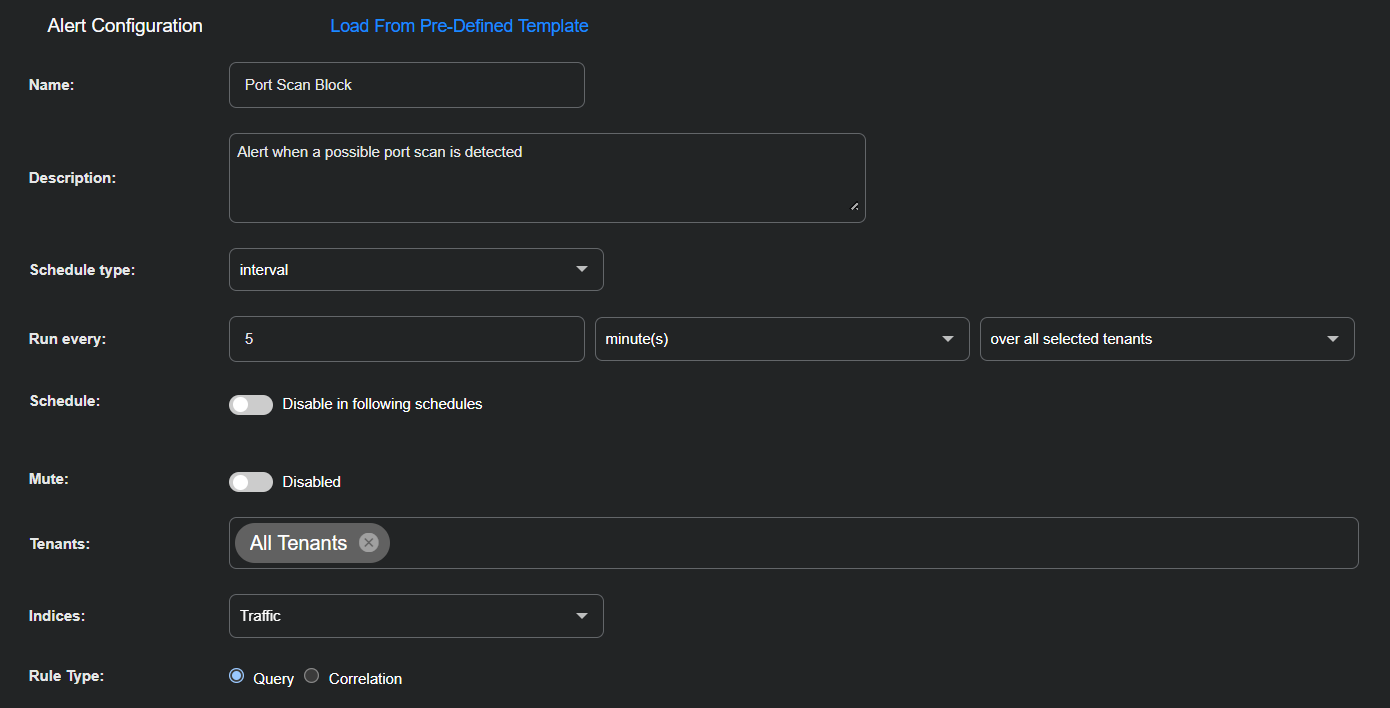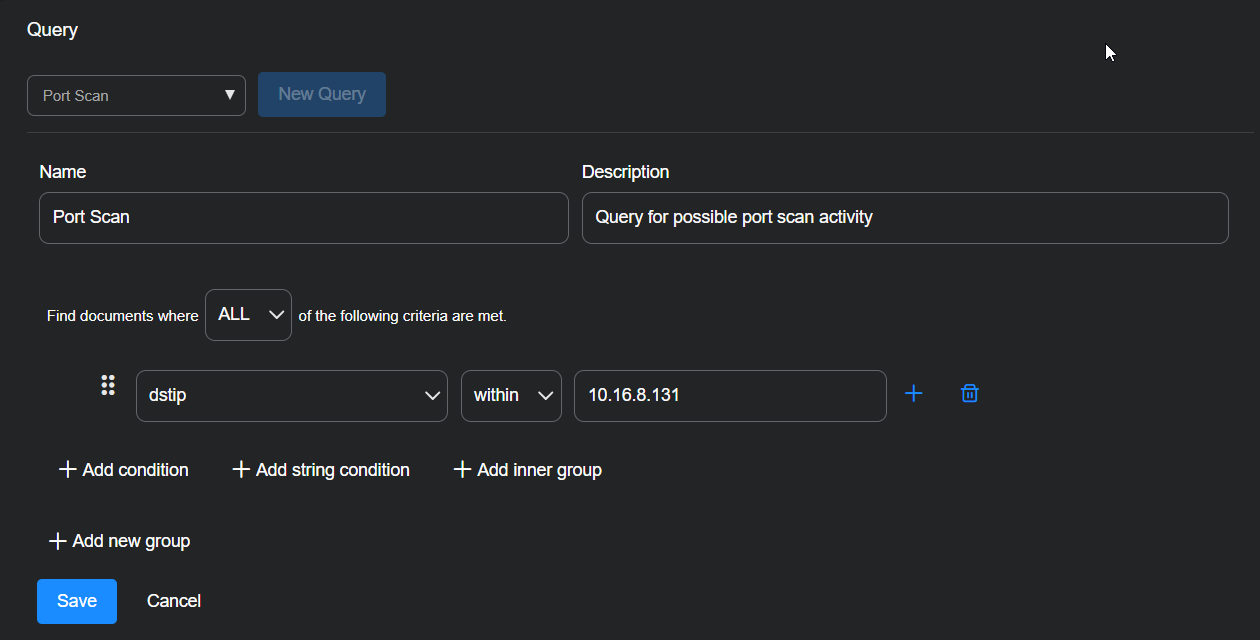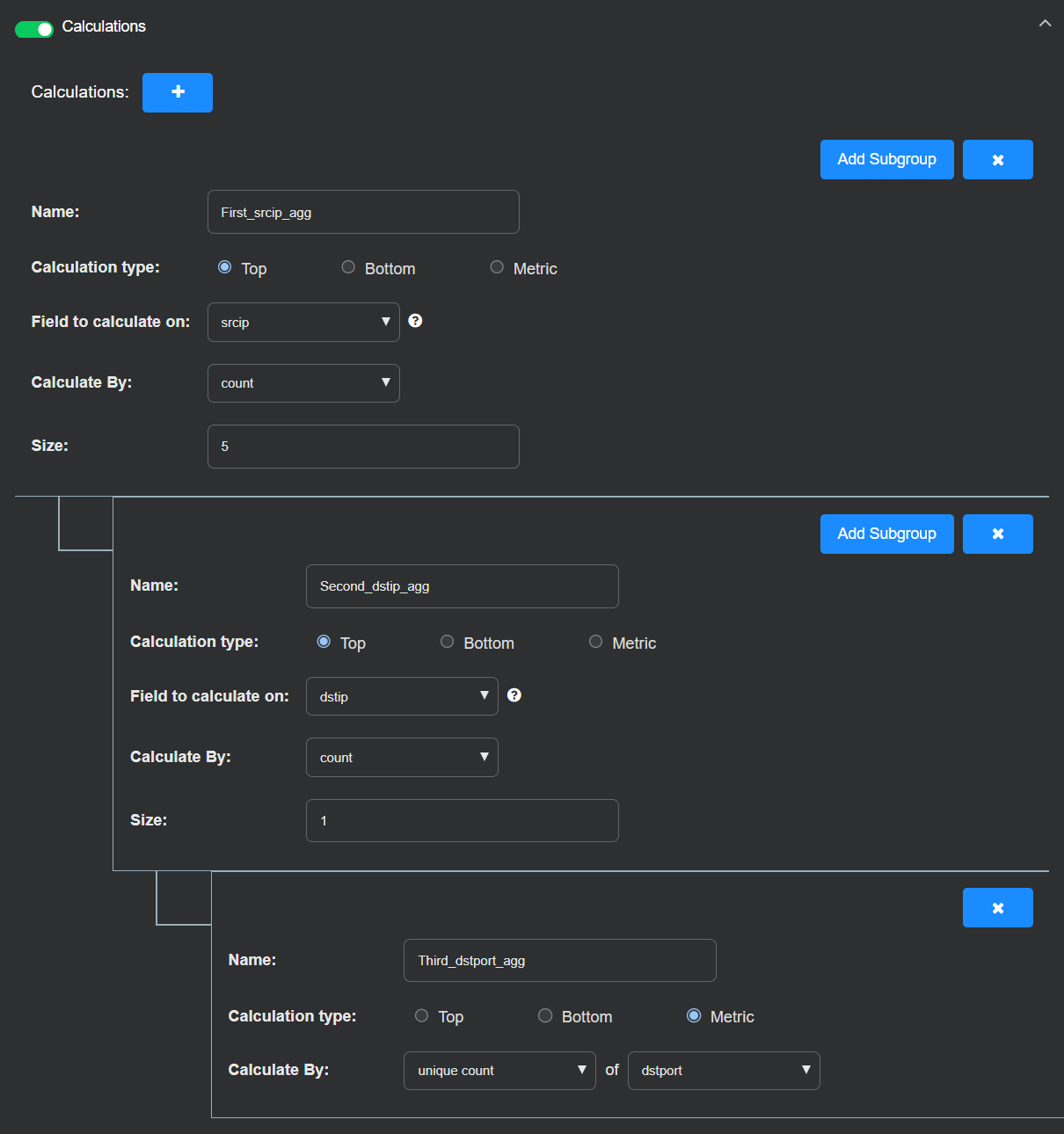ATH Example: Blocking a Port Scanning Source IP
Create an Automated Threat Hunting (ATH) playbook that notifies you when a source IP address is detected pinging a specified destination IP address on more than 20 destination ports. This is known as port scanning and is a common technique used to identify open ports on a target host. While port scans are often used during legitimate security assessments, they can also indicate hostile reconnaissance. Any alert triggered by this playbook requires further investigation, such as checking whether the source IP address belongs to a known vulnerability scanner or an unrecognized external system.
This example also includes instructions on how to use nested calculations in an ATH playbook.
Configure the Alert
Create an alert that runs a query every 5 minutes on the Traffic index.
-
Navigate to Automation | Automation and select the Create button to add a playbook.
-
Enter the following in the Alert Configuration section:
Name: Port Scan Block
Description: Alert when a possible port scan is detected
Schedule type: interval
Run every: 5 minute(s) over all selected tenants
Schedule: Toggle off (default setting)
Mute: Toggle off (default setting)
Tenants: All Tenants
Indices: Traffic
Rule Type: Query
Build a Query
Create a query that looks for new records with a dstip of 10.16.8.131. This is the IP address that appears to be the target of port scans.
-
Select New Query.
-
Enter the following:
Query Name: Port Scan
Description: Query for possible port scan activity
Find documents where ALL of the following criteria are met.
Select + Add condition and enter dstip, within, 10.16.8.131.
-
Select Save to save your query.
Add Calculations to the Query
In the Calculations section, build a series of nested calculations to match the top five source IP addresses that are probing 10.16.8.131 on more than 20 destination ports. This behavior is characteristic of intentional port scanning, where a source attempts to discover open or responsive services on a target host by sweeping across multiple ports.
-
Toggle Calculations on.
-
Select to add a calculation.
-
Enter the following to match the top five source IP addresses probing 10.16.8.131:
Name: First_srcip_agg
Calculation type: Top
Field to calculate on: srcip
Calculation By: count
Size: 5
-
Select Add Subgroup and add a nested calculation for the top destination IP address:
Name: Second_dstip_agg
Calculation type: Top
Field to calculate on: dstip
Calculate By: count
Size: 1
Because this query is for just one destination IP address (10.16.8.131), the size is 1. If your query is for multiple destination IP addresses, you can set this to a larger size.
-
Select Add Subgroup to add a third nested calculation that matches source IP addresses probing more than 20 destination ports.
Name: Third_dstport_agg
Calculation type: Metric
Calculate By: unique count of dstport
Configure a Condition
To look for hosts probing 10.16.8.131 on more than 20 ports, add a condition that triggers if the count of the third calculation (Result of Third_dstport_agg) is greater than or equal to 20.
Condition Name: Match
Type: Compare List
Comparison: At least one, Result of Third_dstport_agg, is greater than or equal to, 20
Configure Actions
Finally, you must configure a Firewall/Security Switch action to block the IP address when the Match condition you configured in the previous section is detected. Refer to Configuring Firewall/Security Switch Actions for details on configuring this type of action.
When you have finished, select Submit to save and immediately run the playbook.
The new playbook appears in the Automated Threat Hunting Playbooks list.




